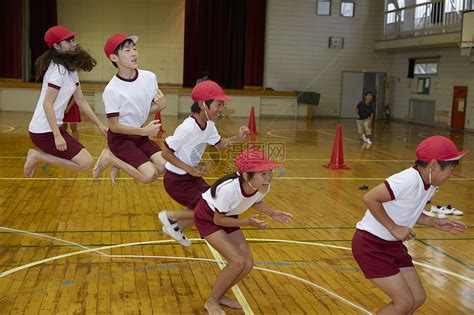Physical education classes offer a unique opportunity to integrate English language learning into the curriculum, promoting both physical health and linguistic proficiency. Incorporating English into PE classes not only enhances language skills but also fosters cultural understanding and global communication. Here are some effective strategies for integrating English language learning into physical education:

1.
Engage students in various physical activities such as running, jumping, or stretching, while simultaneously teaching them related English vocabulary.
Use visual aids, gestures, and demonstrations to reinforce understanding of English terms for body parts, movements, and actions.
2.
Incorporate language games and challenges into PE sessions to make learning English fun and interactive.
Play games like "Simon Says" or "Charades" using English commands and instructions, encouraging students to listen and respond appropriately.
3.
Utilize multilingual instructional materials, such as posters, charts, or videos, that provide visual support for English language learning in PE.
Display signs and posters with English words alongside translations in students' native languages to facilitate comprehension.
4.
Organize teambased activities and sports that require cooperation and communication among students.
Encourage students to communicate in English while strategizing, coordinating movements, and giving feedback to their teammates.
5.
Explore the cultural aspects of sports and physical activities from Englishspeaking countries, such as soccer, basketball, or rugby.
Discuss the history, rules, and significance of these sports in English, promoting crosscultural awareness and appreciation.
6.
Assign reading passages, articles, or stories related to sports and fitness for students to read and discuss in English.
Encourage students to write reflections, reports, or journal entries in English about their PE experiences, goals, and achievements.
7.
Create roleplaying scenarios that involve sportsrelated interactions, such as buying sports equipment, negotiating rules, or reporting game scores.
Allow students to take on different roles and practice using English in realistic situations commonly encountered in sports settings.
8.
Incorporate technology tools, such as educational apps, websites, or interactive simulations, to supplement English language learning in PE.
Use digital resources to provide additional practice, quizzes, or tutorials on sportsrelated English vocabulary and concepts.
9.
Establish connections between PE and other subjects, such as science (anatomy, physiology), math (calculating scores, distances), or geography (identifying sports origins).
Integrate English language learning opportunities into crosscurricular projects or interdisciplinary activities.
10.
Implement assessments that evaluate students' English language proficiency within the context of PE, such as oral presentations, written assignments, or performance evaluations.
Provide constructive feedback and encouragement to help students improve their English language skills while engaging in physical activities.
By incorporating these strategies, physical education teachers can create a dynamic learning environment that promotes both physical fitness and English language proficiency. Through active participation in sports and fitness activities, students can enhance their vocabulary, communication skills, and cultural awareness, laying the foundation for lifelong health and linguistic success.
This integrated approach not only benefits English language learners but also enriches the overall educational experience, fostering a deeper appreciation for diversity and inclusivity within the school community.